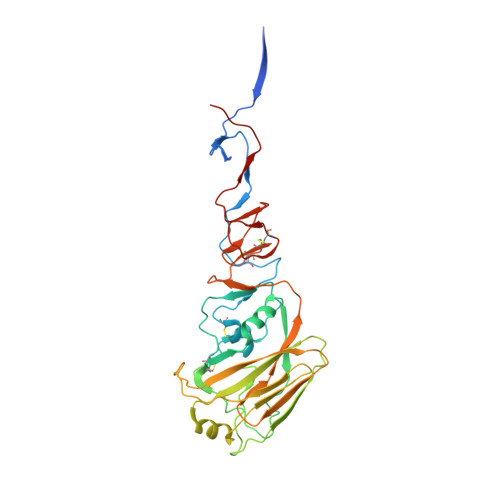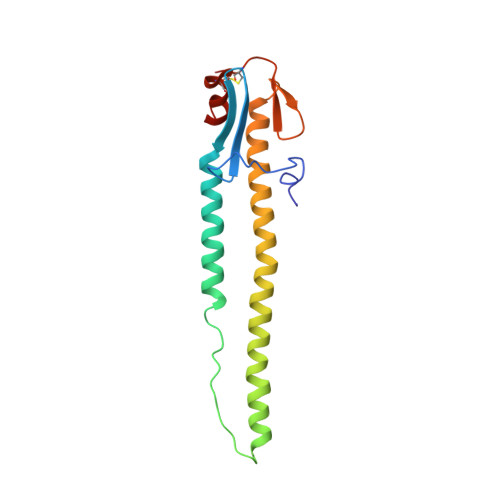Haemagglutinin mutations responsible for the binding of H5N1 influenza A viruses to human-type receptors.
Yamada, S., Suzuki, Y., Suzuki, T., Le, M.Q., Nidom, C.A., Sakai-Tagawa, Y., Muramoto, Y., Ito, M., Kiso, M., Horimoto, T., Shinya, K., Sawada, T., Kiso, M., Usui, T., Murata, T., Lin, Y., Hay, A., Haire, L.F., Stevens, D.J., Russell, R.J., Gamblin, S.J., Skehel, J.J., Kawaoka, Y.(2006) Nature 444: 378-382
- PubMed: 17108965
- DOI: https://doi.org/10.1038/nature05264
- Primary Citation of Related Structures:
2IBX - PubMed Abstract:
H5N1 influenza A viruses have spread to numerous countries in Asia, Europe and Africa, infecting not only large numbers of poultry, but also an increasing number of humans, often with lethal effects. Human and avian influenza A viruses differ in their recognition of host cell receptors: the former preferentially recognize receptors with saccharides terminating in sialic acid-alpha2,6-galactose (SAalpha2,6Gal), whereas the latter prefer those ending in SAalpha2,3Gal (refs 3-6). A conversion from SAalpha2,3Gal to SAalpha2,6Gal recognition is thought to be one of the changes that must occur before avian influenza viruses can replicate efficiently in humans and acquire the potential to cause a pandemic. By identifying mutations in the receptor-binding haemagglutinin (HA) molecule that would enable avian H5N1 viruses to recognize human-type host cell receptors, it may be possible to predict (and thus to increase preparedness for) the emergence of pandemic viruses. Here we show that some H5N1 viruses isolated from humans can bind to both human and avian receptors, in contrast to those isolated from chickens and ducks, which recognize the avian receptors exclusively. Mutations at positions 182 and 192 independently convert the HAs of H5N1 viruses known to recognize the avian receptor to ones that recognize the human receptor. Analysis of the crystal structure of the HA from an H5N1 virus used in our genetic experiments shows that the locations of these amino acids in the HA molecule are compatible with an effect on receptor binding. The amino acid changes that we identify might serve as molecular markers for assessing the pandemic potential of H5N1 field isolates.
Organizational Affiliation:
Division of Virology, Department of Microbiology and Immunology, Institute of Medical Science, University of Tokyo, Tokyo 108-8639, Japan.

















